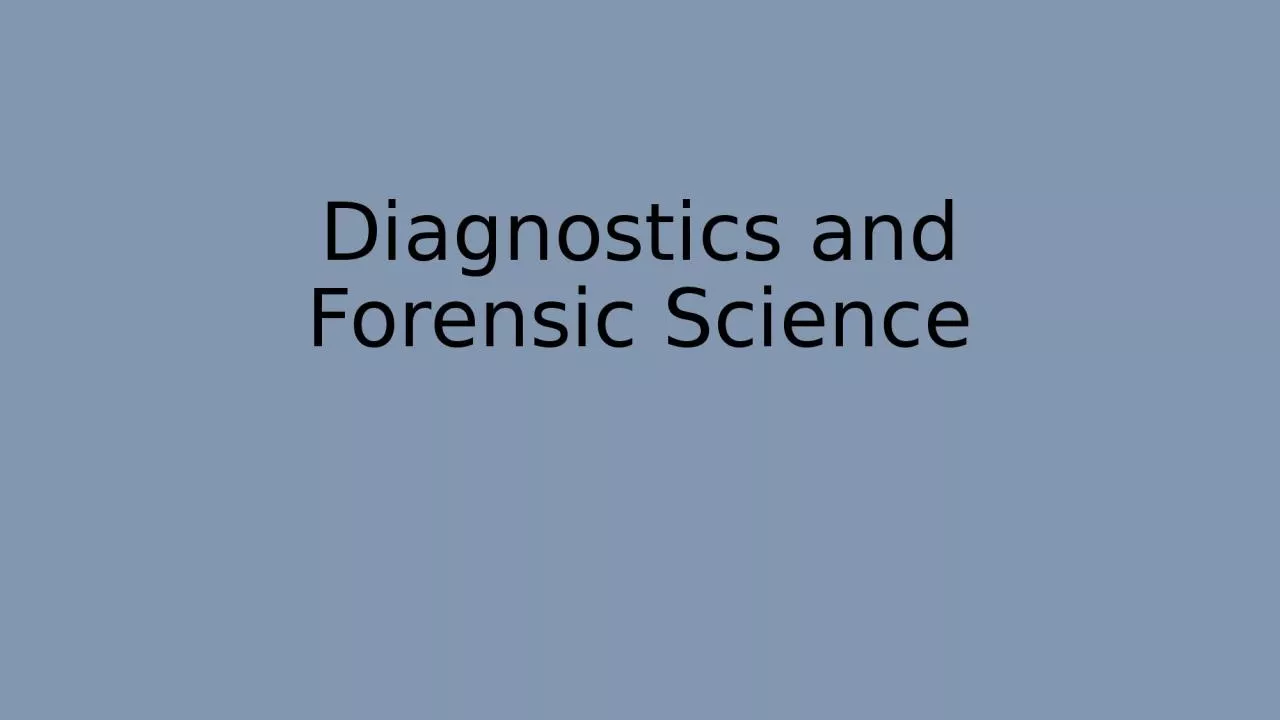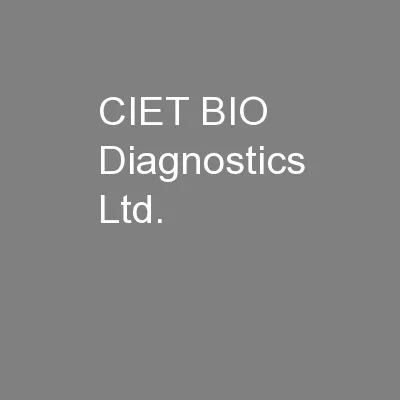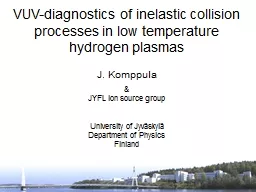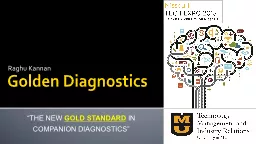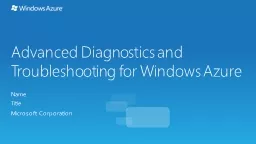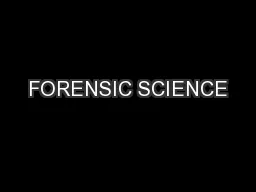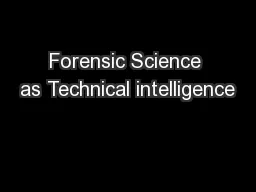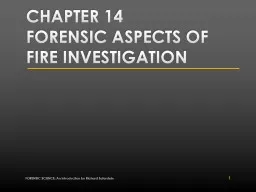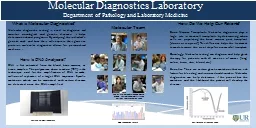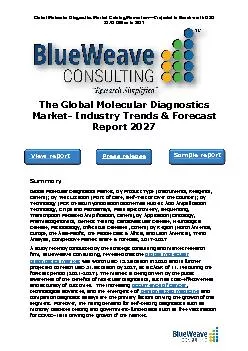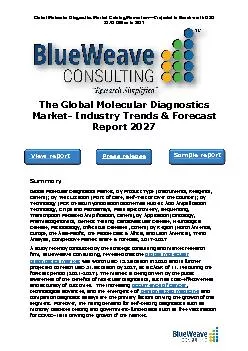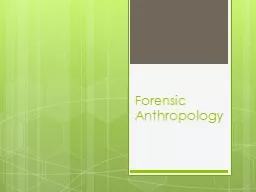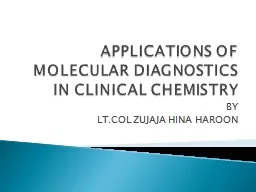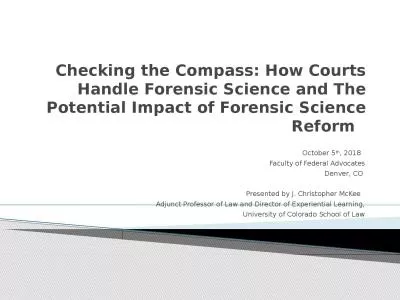PPT-Diagnostics and Forensic Science
Author : queenie | Published Date : 2023-12-30
Diagnostics Services Diagnosis determining the cause of an illness or condition Clinical Laboratory Scientists or Medical Technologists often do the tests Done
Presentation Embed Code
Download Presentation
Download Presentation The PPT/PDF document "Diagnostics and Forensic Science" is the property of its rightful owner. Permission is granted to download and print the materials on this website for personal, non-commercial use only, and to display it on your personal computer provided you do not modify the materials and that you retain all copyright notices contained in the materials. By downloading content from our website, you accept the terms of this agreement.
Diagnostics and Forensic Science: Transcript
Download Rules Of Document
"Diagnostics and Forensic Science"The content belongs to its owner. You may download and print it for personal use, without modification, and keep all copyright notices. By downloading, you agree to these terms.
Related Documents

